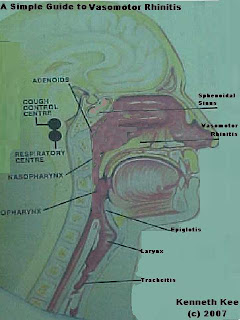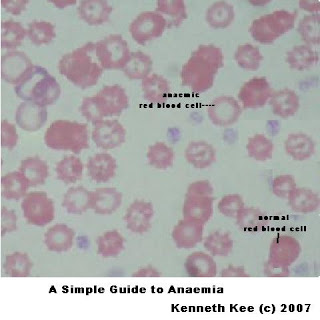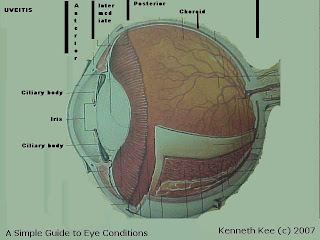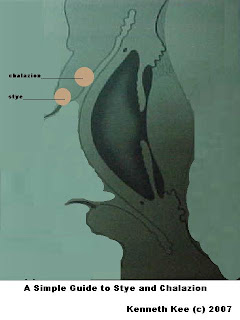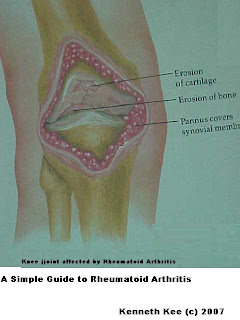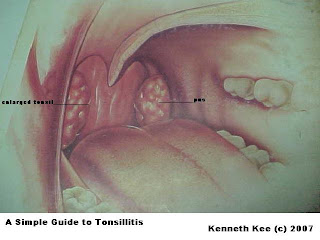
A Simple Guide to Breast Cancer
--------------------------------------
What is Breast Cancer?
---------------------------
Breast cancer is a disease in which malignant (cancer) cells form in the tissues of the breast. It is the most common type of cancer among women.
--------------------------------------
What is Breast Cancer?
---------------------------
Breast cancer is a disease in which malignant (cancer) cells form in the tissues of the breast. It is the most common type of cancer among women.
How does Breast Cancer Presents?
-----------------------------------------
Breast Cancer occurs as uncontrolled growth of mutated (abnormal) cells from the breast tissues.
It occurs as in 2 main forms:
1.preinvasive cancer:
Preinvasive breast cancer is confined to the breast ducts or lobules and the cancer cells do not have the abilty to spread. It is classified as Stage 0 Breast Cancer (carcinoma-in-situ).
2.invasive cancer:
Invasive Breast Cancer occurs when the cancer cells spread to the surrounding tissues of the breasts and then to the lymph nodes under the armpits.
These cancer cells can also spread to other parts of the body like the lungs, liver and bones.
Invasive breast cancer is classified into 4 stages from Stage 1 to 4 according to severity, stage 4 being the most severe.
What are the Risk factors in Breast Cancer?
----------------------------------------------------
All women are at risk of breast cancer and the risk increases with age.
Main risk factors are:
1.family history of breast cancer,
2 past medical history of breast cancer and ovarian cancer,
3.Menstruating at an early age.
4.late menopause or
5.having your first child after age 30 or never having given birth.
6.Taking hormones such as estrogen and progesterone.
What are the signs of Breast Cancer?
-------------------------------------------
Signs, which may indicate Breast Cancer, are:
1.a painless lump in the breast or armpit
2.abnormal discharge from the nipple
3.changes in the skin over the breast or nipple
4.new retraction (pulling in) of the nipple
5.persistant rash around the nipple
How do you diagnose Breast Cancer?
------------------------------------------
1.Breast Self Examination (BSE)
-----------------------------------
It is very important for every woman above aged 30 years old to learn, and practise BSE regularly once a month, about a week after each menstrual period. Women who no longer have periods should practise BSE on a fixed date each month.
2.Mammography
------------------
1.Women aged 40 - 49 years are encouraged to go for regular mammography every year 2.Women 50 years and above should go every two years.
3.Women who are at higher risk of developing breast cancer should see a doctor for advice. You may need to go for screening earlier and more frequently.
Mammography is a low-dose X-ray of the breast using specially designed X-ray machine.
It is the most effective method to detect very small lumps in the breast even before they can be felt by the hand.
3.Ultrasound of the Breasts
-------------------------------
Ultrasound of the Breasts is used together with mammography in cases where the diagnosis of possible cancer of the breast is not confirmed.
The ultrasound may be able to detect small lumps, which are not detected by mammogram.
4.MRI (magnetic resonance imaging) of the Breasts
----------------------------------------------------------
MRI is a procedure that uses a magnet, radio waves, and a computer to make a series of detailed pictures of areas in the body. With advancement of technology, a MRI of the breasts can detect even more clearly any abnormal lumps or tissues in the breasts.
5.Estrogen and progesterone receptor test:
-----------------------------------------------
A test to measure the amount of estrogen and progesterone (female hormones) receptors in cancer tissue. The test results show whether hormone therapy may stop the cancer from growing.
6.Biopsy:
-----------
The removal of cells or tissues so they can be viewed under a microscope by a pathologist to check for signs of cancer. If a lump in the breast is found, the doctor may need to cut out a small piece of the lump.
Four types of biopsies are as follows:
Excisional biopsy: The removal of an entire lump or suspicious tissue.
Incisional biopsy: The removal of part of a lump or suspicious tissue.
Core biopsy: The removal of part of a lump or suspicious tissue using a wide needle.
Needle biopsy: The removal of part of a lump, suspicious tissue, or fluid, using a thin needle.
What is the Treatment of Breast Cancer?
-----------------------------------------------
There are different types of treatment for patients with breast cancer.
Four types of standard treatment are used:
1.Surgery
---------
Most patients with breast cancer have surgery to remove the cancer from the breast. Some of the lymph nodes under the arm are usually taken out and looked at under a microscope to see if they contain cancer cells.
Lumpectomy: Breast-conserving surgery to remove a tumor (lump) and a small amount of normal tissue around it.
Partial mastectomy: Surgery to remove the part of the breast that has cancer and some normal tissue around it. This procedure is also called a segmental mastectomy.
Total mastectomy: Surgery to remove the whole breast that has cancer. This procedure is also called a simple mastectomy. Some of the lymph nodes under the arm may be removed for biopsy at the same time as the breast surgery or after. This is done through a separate incision.
Modified radical mastectomy: Surgery to remove the whole breast that has cancer, many of the lymph nodes under the arm, the lining over the chest muscles, and sometimes, part of the chest wall muscles.
Radical mastectomy: Surgery to remove the breast that has cancer, chest wall muscles under the breast, and all of the lymph nodes under the arm. This procedure is sometimes called a Halsted radical mastectomy.
Even if the doctor removes all the cancer that can be seen at the time of the surgery, some patients may be given radiation therapy, chemotherapy, or hormone therapy after surgery to kill any cancer cells that are left. Treatment given after the surgery, to increase the chances of a cure, is called adjuvant therapy.
If a patient is going to have a mastectomy, breast reconstruction (surgery to rebuild a breast's shape after a mastectomy) may be considered. Breast reconstruction may be done at the time of the mastectomy or at a future time.
2.Radiation therapy
--------=---------------
Radiation therapy is a cancer treatment that uses high-energy x-rays or other types of radiation to kill cancer cells or keep them from growing.
External radiation therapy uses a machine outside the body to send radiation toward the cancer.
Internal radiation therapy uses a radioactive substance sealed in needles, seeds, wires, or catheters that are placed directly into or near the cancer.
3.Chemotherapy
--------------------
Chemotherapy is a cancer treatment that uses drugs to stop the growth of cancer cells, either by killing the cells or by stopping them from dividing.
4.Hormone therapy
-----------------------
Hormone therapy is a cancer treatment that removes female hormones or blocks their action and stops cancer cells from growing.
Examples are tamoxifen and aromaase inhibitors.
Other newer methods are:
Sentinel lymph node biopsy followed by surgery
--------------------------------------------------------
Sentinel lymph node biopsy is the removal of the sentinel lymph node during surgery. The sentinel lymph node is the first lymph node to receive lymphatic drainage from a tumor. After that biopsy, the surgeon removes the tumor (breast-conserving surgery or mastectomy).
Monoclonal antibodies as adjuvant therapy
---------------------------------------------------
Monoclonal antibody therapy is a cancer treatment that uses antibodies made in the laboratory, from a single type of immune system cell. The antibodies attach to the cancer cells, block their growth, or keep them from spreading.
Examples are Trastuzumab (Herceptin) which blocks the effects of the growth factor protein HER2, Tyrosine kinase inhibitors which block signals needed for tumors to grow, Lapatinib which blocks the effects of the HER2 protein and other proteins inside tumor cells.
Treatment of Preinvasive Breast Cancer
------------------------------------------------
Surgery is the main form of treatment for this stage of Cancer.
Either a lumpectomy or a mastectomy can be done.
Women who choose lumpectomy usually have to undergo radiation treatment or radiotherapy.
The type of surgical treatment depends on
1. The size and extent of cancer within the breast
2.the patient's suitability or desire to undergo radiotherapy.
Chemotherapy is not required for cancer detected at such an early stage.
Treatment of Invasive Breast Cancer
-------------------------------------------
Surgery is the main treatment as well in this case.
It involves the removal of the cancer with or without preserving the breast.
In the late stages where the cancer has spread to the other parts of the body, surgical removal of the cancer may be done to reduce the pain.
Chemotherapy is given to treat the cancer that has spread beyond the breast and armpit. It can be given orally or by injection.
The decision to use chemotherapy depends on:
1. The stage of the cancer
2. Type of cancer cells
3. Whether the woman has reached menopause
Chemotherapy may be used before surgery in large cancers to reduce cancer recurrence or to increase the chance of safe breast preservation surgery.
Hormonal therapy is used for hormone responsive cancers to deprive the cancer cells of oestrogen, which is required for such cancers to grow.
It is given in place of chemotherapy or following it.
Radiotherapy uses high-energy rays to kill cancer cells or stop them from growing further. It may be given for a peroid of time after a lumpectomy or after a mastectomy.
It is also given for inoperable cancers.
How is Breast Cancer Recurrence detected?
---------------------------------------------------
After cancer treatment, patients are required to follow up with their doctors at regular intervals especially in the first 5 years after treatment when the risk of recurrence is highest.
This include:
Physical examination of the breasts, underarm, neck.
Peroidic mammograms
Blood tests
Chest x-rays and
Bone scan.
Any complaints of change in surgical areas or other parts of the breasts, swollen lymph glands or bone pains may suggest a recurrence.
What is the Prognosis of Breast Cancer?
-----------------------------------------------
The prognosis (chance of recovery) and treatment options depend on the following:
1.stage of the cancer (whether it is in the breast only or has spread to lymph nodes or other places in the body).
2. type of breast cancer.
3.Estrogen-receptor and progesterone-receptor levels in the tumor tissue.
4.woman's age, general health, and menopausal status (whether a woman is still having menstrual periods).
5.Whether the cancer has just been diagnosed or has recurred.
Finally please note that Breast Cancer can also occur in Men!
Breast Cancer occurs as uncontrolled growth of mutated (abnormal) cells from the breast tissues.
It occurs as in 2 main forms:
1.preinvasive cancer:
Preinvasive breast cancer is confined to the breast ducts or lobules and the cancer cells do not have the abilty to spread. It is classified as Stage 0 Breast Cancer (carcinoma-in-situ).
2.invasive cancer:
Invasive Breast Cancer occurs when the cancer cells spread to the surrounding tissues of the breasts and then to the lymph nodes under the armpits.
These cancer cells can also spread to other parts of the body like the lungs, liver and bones.
Invasive breast cancer is classified into 4 stages from Stage 1 to 4 according to severity, stage 4 being the most severe.
What are the Risk factors in Breast Cancer?
----------------------------------------------------
All women are at risk of breast cancer and the risk increases with age.
Main risk factors are:
1.family history of breast cancer,
2 past medical history of breast cancer and ovarian cancer,
3.Menstruating at an early age.
4.late menopause or
5.having your first child after age 30 or never having given birth.
6.Taking hormones such as estrogen and progesterone.
What are the signs of Breast Cancer?
-------------------------------------------
Signs, which may indicate Breast Cancer, are:
1.a painless lump in the breast or armpit
2.abnormal discharge from the nipple
3.changes in the skin over the breast or nipple
4.new retraction (pulling in) of the nipple
5.persistant rash around the nipple
How do you diagnose Breast Cancer?
------------------------------------------
1.Breast Self Examination (BSE)
-----------------------------------
It is very important for every woman above aged 30 years old to learn, and practise BSE regularly once a month, about a week after each menstrual period. Women who no longer have periods should practise BSE on a fixed date each month.
2.Mammography
------------------
1.Women aged 40 - 49 years are encouraged to go for regular mammography every year 2.Women 50 years and above should go every two years.
3.Women who are at higher risk of developing breast cancer should see a doctor for advice. You may need to go for screening earlier and more frequently.
Mammography is a low-dose X-ray of the breast using specially designed X-ray machine.
It is the most effective method to detect very small lumps in the breast even before they can be felt by the hand.
3.Ultrasound of the Breasts
-------------------------------
Ultrasound of the Breasts is used together with mammography in cases where the diagnosis of possible cancer of the breast is not confirmed.
The ultrasound may be able to detect small lumps, which are not detected by mammogram.
4.MRI (magnetic resonance imaging) of the Breasts
----------------------------------------------------------
MRI is a procedure that uses a magnet, radio waves, and a computer to make a series of detailed pictures of areas in the body. With advancement of technology, a MRI of the breasts can detect even more clearly any abnormal lumps or tissues in the breasts.
5.Estrogen and progesterone receptor test:
-----------------------------------------------
A test to measure the amount of estrogen and progesterone (female hormones) receptors in cancer tissue. The test results show whether hormone therapy may stop the cancer from growing.
6.Biopsy:
-----------
The removal of cells or tissues so they can be viewed under a microscope by a pathologist to check for signs of cancer. If a lump in the breast is found, the doctor may need to cut out a small piece of the lump.
Four types of biopsies are as follows:
Excisional biopsy: The removal of an entire lump or suspicious tissue.
Incisional biopsy: The removal of part of a lump or suspicious tissue.
Core biopsy: The removal of part of a lump or suspicious tissue using a wide needle.
Needle biopsy: The removal of part of a lump, suspicious tissue, or fluid, using a thin needle.
What is the Treatment of Breast Cancer?
-----------------------------------------------
There are different types of treatment for patients with breast cancer.
Four types of standard treatment are used:
1.Surgery
---------
Most patients with breast cancer have surgery to remove the cancer from the breast. Some of the lymph nodes under the arm are usually taken out and looked at under a microscope to see if they contain cancer cells.
Lumpectomy: Breast-conserving surgery to remove a tumor (lump) and a small amount of normal tissue around it.
Partial mastectomy: Surgery to remove the part of the breast that has cancer and some normal tissue around it. This procedure is also called a segmental mastectomy.
Total mastectomy: Surgery to remove the whole breast that has cancer. This procedure is also called a simple mastectomy. Some of the lymph nodes under the arm may be removed for biopsy at the same time as the breast surgery or after. This is done through a separate incision.
Modified radical mastectomy: Surgery to remove the whole breast that has cancer, many of the lymph nodes under the arm, the lining over the chest muscles, and sometimes, part of the chest wall muscles.
Radical mastectomy: Surgery to remove the breast that has cancer, chest wall muscles under the breast, and all of the lymph nodes under the arm. This procedure is sometimes called a Halsted radical mastectomy.
Even if the doctor removes all the cancer that can be seen at the time of the surgery, some patients may be given radiation therapy, chemotherapy, or hormone therapy after surgery to kill any cancer cells that are left. Treatment given after the surgery, to increase the chances of a cure, is called adjuvant therapy.
If a patient is going to have a mastectomy, breast reconstruction (surgery to rebuild a breast's shape after a mastectomy) may be considered. Breast reconstruction may be done at the time of the mastectomy or at a future time.
2.Radiation therapy
--------=---------------
Radiation therapy is a cancer treatment that uses high-energy x-rays or other types of radiation to kill cancer cells or keep them from growing.
External radiation therapy uses a machine outside the body to send radiation toward the cancer.
Internal radiation therapy uses a radioactive substance sealed in needles, seeds, wires, or catheters that are placed directly into or near the cancer.
3.Chemotherapy
--------------------
Chemotherapy is a cancer treatment that uses drugs to stop the growth of cancer cells, either by killing the cells or by stopping them from dividing.
4.Hormone therapy
-----------------------
Hormone therapy is a cancer treatment that removes female hormones or blocks their action and stops cancer cells from growing.
Examples are tamoxifen and aromaase inhibitors.
Other newer methods are:
Sentinel lymph node biopsy followed by surgery
--------------------------------------------------------
Sentinel lymph node biopsy is the removal of the sentinel lymph node during surgery. The sentinel lymph node is the first lymph node to receive lymphatic drainage from a tumor. After that biopsy, the surgeon removes the tumor (breast-conserving surgery or mastectomy).
Monoclonal antibodies as adjuvant therapy
---------------------------------------------------
Monoclonal antibody therapy is a cancer treatment that uses antibodies made in the laboratory, from a single type of immune system cell. The antibodies attach to the cancer cells, block their growth, or keep them from spreading.
Examples are Trastuzumab (Herceptin) which blocks the effects of the growth factor protein HER2, Tyrosine kinase inhibitors which block signals needed for tumors to grow, Lapatinib which blocks the effects of the HER2 protein and other proteins inside tumor cells.
Treatment of Preinvasive Breast Cancer
------------------------------------------------
Surgery is the main form of treatment for this stage of Cancer.
Either a lumpectomy or a mastectomy can be done.
Women who choose lumpectomy usually have to undergo radiation treatment or radiotherapy.
The type of surgical treatment depends on
1. The size and extent of cancer within the breast
2.the patient's suitability or desire to undergo radiotherapy.
Chemotherapy is not required for cancer detected at such an early stage.
Treatment of Invasive Breast Cancer
-------------------------------------------
Surgery is the main treatment as well in this case.
It involves the removal of the cancer with or without preserving the breast.
In the late stages where the cancer has spread to the other parts of the body, surgical removal of the cancer may be done to reduce the pain.
Chemotherapy is given to treat the cancer that has spread beyond the breast and armpit. It can be given orally or by injection.
The decision to use chemotherapy depends on:
1. The stage of the cancer
2. Type of cancer cells
3. Whether the woman has reached menopause
Chemotherapy may be used before surgery in large cancers to reduce cancer recurrence or to increase the chance of safe breast preservation surgery.
Hormonal therapy is used for hormone responsive cancers to deprive the cancer cells of oestrogen, which is required for such cancers to grow.
It is given in place of chemotherapy or following it.
Radiotherapy uses high-energy rays to kill cancer cells or stop them from growing further. It may be given for a peroid of time after a lumpectomy or after a mastectomy.
It is also given for inoperable cancers.
How is Breast Cancer Recurrence detected?
---------------------------------------------------
After cancer treatment, patients are required to follow up with their doctors at regular intervals especially in the first 5 years after treatment when the risk of recurrence is highest.
This include:
Physical examination of the breasts, underarm, neck.
Peroidic mammograms
Blood tests
Chest x-rays and
Bone scan.
Any complaints of change in surgical areas or other parts of the breasts, swollen lymph glands or bone pains may suggest a recurrence.
What is the Prognosis of Breast Cancer?
-----------------------------------------------
The prognosis (chance of recovery) and treatment options depend on the following:
1.stage of the cancer (whether it is in the breast only or has spread to lymph nodes or other places in the body).
2. type of breast cancer.
3.Estrogen-receptor and progesterone-receptor levels in the tumor tissue.
4.woman's age, general health, and menopausal status (whether a woman is still having menstrual periods).
5.Whether the cancer has just been diagnosed or has recurred.
Finally please note that Breast Cancer can also occur in Men!


